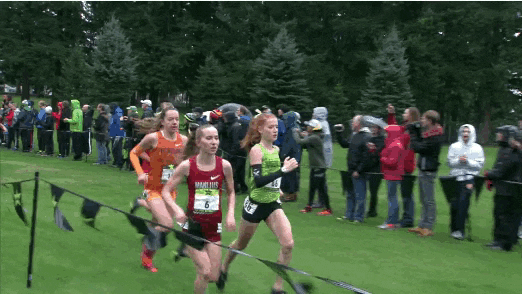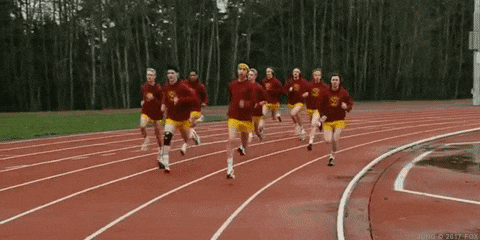Essential Strength Exercises for Runners
Often times we hear from distance runner coaches and distant runners asking questions about lifting weights. They express not wanting to look like throwers. They want to know if lifting weights can actually help them as distance runners.
We need to understand a few key concepts right away. We need to think about events like the triathlon, marathon, 800 m run, 1500 m run, 1-mile run, 5k, steeplechase, or anything over ninety seconds of continuous running that may extend into time domains of hours and even longer for some endurance runners. These are competitions that take a fairly long period of time. From the outside looking in, what is strength training going to do?

We understand that training through a full range of motion, targets specific muscular areas and issues, we know that strength training can increase bone density, improve mobility, and improve stability. That takes us to our first key concept for strength training for distance runners.
1. Improve Overall Mobility
Distance running can beat up athletes’ lower backs, hips, and ankles. Distance running creates a lot of fatigue and stress on the body. However, if we utilize strength training to improve mobility distance runners will be able to recover quicker, be more mobile, and through that greater mobility, they will have greater structural integrity in each specific joint.
More structural integrity in each specific joint allows for a longer stride length because the hips are more mobile. Athletes can have greater dorsiflexion when the foot grounds underneath them to create more power upon ground impact.
For instance, distance runners in the weight room can do single-leg squats with the front foot farther forward to open up the hips and target the glutes a little more. They can even do bilateral back squats. Nothing needs to be crazy or absurdly heavy. Still, all of that will lead to better performance because of the improvement in overall mobility.
2. Improve Overall Strength Endurance
Think about the 800 m, 1500 m, the 5k, or steeplechase, longer races. Even cross-country or the marathon speak to long-duration movement. In the weight room runners can improve their overall strength endurance.
Distance runners can improve their overall strength endurance by putting a barbell on their back and can do walking lunges for sets of sixty to seventy-five seconds. We can play around with various time frames. Maybe distance runners can do superset dumbbell stiff-legged deads with walking lunges and we want the sets to last for two to two and a half minutes. Now, from doing two different exercises targeting two different areas, the body is able to execute more effectively. On top of that, distance runners’ strength will improve from the resistance base training. Additionally, the athletes’ strength endurance will improve as well from performing movements over longer periods of time.

It is important that distance runners and coaches understand how different movements and different sets and times under tension with movements can improve the abilities of distance runners to lead to greater success running.
3. Using Resistance Training To Improve Limb Imbalances
Utilizing resistance-based training, strength training to improve limb imbalances is done by elite runners.
We can watch distance runners run and see their gate, biomechanics, and see where they have limb imbalances and inefficiencies. We can notice hips dropping a little bit more to one side or loss of dynamic trunk control. Or maybe we notice a tighter or looser Achilles on one leg which decreases the way they strike the ground.
These are small limb imbalances that can lead to overuse injuries or, if not addressed, can lead to a catastrophic injury over the long term which will hinder long-term development. Utilizing strength training and resistance training to address limb imbalances distance runners will be able to improve technique through greater muscle efficiency. The better technique leads to a much more efficient stride length from side to side. Fixing a hip drop will allow for more strides over a period of time without leading to a large decrease in energy output from an imbalance in the body.
4. Power Output
This is the number one reason that some of the best distance runners in the world utilize strength training is to improve power output. Strength training for distance runners can drastically improve power output.
Hypothetically, let’s say a distance runner on the track can complete 400 meters in 120 strides. Now that athlete gets a little stronger from strength training and can now complete a lap in 100 strides (this is hypothetical, the numbers are not accurate but used to illustrate a point). We can see that the greater power output from strength training allows the distance runner to have a greater power output each time they strike the ground, can handle the striking of the ground and improve dynamic trunk control and the greater power output has the distance runner using less energy per stride. On top of that, using less energy per stride distance runners can have a faster kick now from having more strength in the posterior chain, their calves are more explosive, and they have a hip lock running at the higher end speed all from utilizing plyometrics, a little heavier squats, and other strength methods to become more explosive.
Recap
Distance runners need to utilize strength training methods to improve their timed running. Strength training and resistance-based training will improve distance runners’ stride length, mobility, strength endurance, and power output so they use fewer strides per lap and have a greater kick at the end of the run. The goal of strength training for distance runners isn’t to look like a thrower or weightlifter but to utilize the tools of the weight room to improve their sports performance in distance running. So distance runners! Hit the weights and see the improvement with faster times and stronger strides.
DANE MILLER
Dane Miller is the owner and founder of Garage Strength Sports Performance. He works with a select handful of clients on building comprehensive programs for fitness and nutrition. Several times a year he leads a workshop for coaches, trainers, and fitness enthusiasts.


